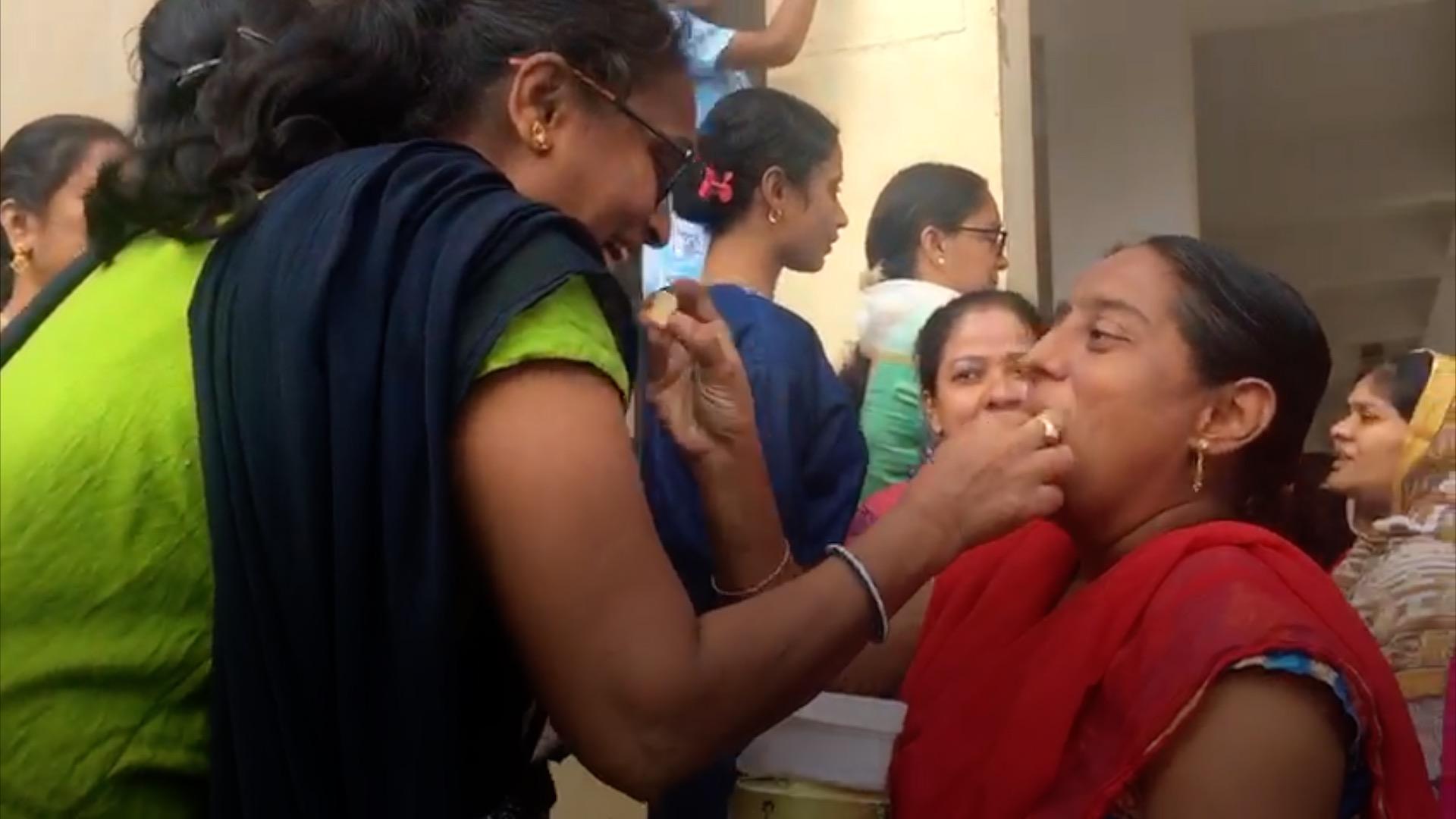Hyderabad case: How effective is India's justice system in dealing with rape?
- Published

Protests outside a police station after the recent rape and murder of a young woman
The killing by police of four men suspected of raping and killing a young woman in southern India has focused attention again on the country's justice system.
Government figures for 2017 show that, on average, there were more than 90 rapes a day reported.
Relatively few of the victims of these rapes are likely to see their attackers convicted.
We've looked at the figures, and at how India compares with other countries.
What's happening with the justice system?
Rape and sexual violence against women in India has received more attention since the widely-reported gang rape and murder of a student in the capital, Delhi, in 2012.
Official figures show a significant increase in the number of rape cases being reported to the police since then, from just under 25,000 in 2012 to more than 38,000 in 2016.

In 2017, the last year for which data is available, there were 32,559 rapes reported to police.
But Indian courts seem to be struggling to deal with this increase because by the end of 2017, there were more than 127,800 cases pending.
Only about 18,300 court cases had been completed that year.
As a comparison, 20,660 court cases were completed and 113,000 were pending, by the end of 2012.
What about the conviction rate?
Between 2002 and 2011, convictions were secured in about 26% of all cases that went to court.
After 2012, the conviction rate started to improve before falling back to just over 25% in 2016. In 2017, the conviction rate went up to just over 32%.
It can be difficult to secure convictions given the length of time it takes for cases to reach court, and the pressures that are sometimes exerted on both the victim, and potential witnesses.

This can be especially true where the defendant is high-profile or has political connections.
For example, at least nine witnesses were attacked in sexual assault and rape cases that were brought against self-styled spiritual guru, Asaram Bapu, who was convicted in 2018.
Last year, the government said it was setting up an additional 1,000 fast-track courts to deal with the backlog of rape cases.
How does India compare internationally?
India's conviction rate for rape cases appears to be higher than some other developing countries.
BBC Reality Check: Has India become a safer place for women?
In South Africa, research in 2017 revealed that only 8% of rapists who were taken to court were convicted. And in Bangladesh, conviction rates are extremely low, according to a 2018 study by a women's rights group, external.
In some countries with higher conviction rates, there's been concern expressed about the fact that fewer cases are ending up in court, with therefore fewer overall convictions for rape.
In parts of the UK, there's been a growing gap between the number of rape cases reported to police and the numbers that result in a prosecution.

A vigil in Delhi for rape victims
This year, the proportion of reported rapes in England and Wales going to court was at its lowest level for more than a decade, which was linked to a desire by the prosecuting authorities to maintain a relatively high conviction rate of 60%.
Sweden and other Nordic countries have been criticised by Amnesty International for having relatively poor levels of conviction for rape and sexual assault, despite scoring highly in global surveys for gender equality. , external
But countries differ quite widely in their legal definitions of what constitutes rape, in police recording procedures, and in their prosecuting systems.
Cultural attitudes can also affect how victims and their families - as well as the law enforcement system - respond to sexual assault.

- Published6 December 2019
